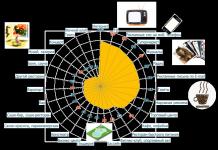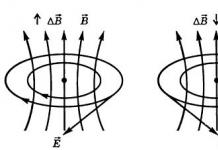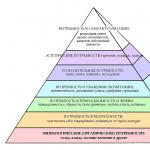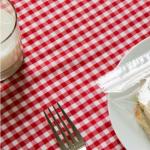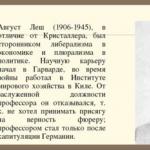Do you dream of building an economical, safe and warm home? Then you should contact modern technologies, which intelligently combine centuries of experience, ingenuity and sometimes completely unexpected technical solutions. Good one An example is a two- and three-circuit chimney, inside of which there is insulation. Who would have thought a couple of decades ago that something like this was even possible? Moreover, such a chimney really has many valuable advantages; it is only important to do everything according to the stove rules, without deviating from them one iota.
Proper installation of a sandwich chimney begins with the design of the house. Only when making a drawing can absolutely all requirements for fire safety standards, and then you won’t have to redo or even rebuild anything. If the house or bathhouse is already ready, then it will be necessary to make all the calculations as accurately as possible. We advise you, if you undertake to make such a chimney yourself, to approach this issue with all responsibility - you are doing it for yourself.
A short introduction regarding the benefits. In private housing construction in Russia, it is sandwich chimneys that are most widespread, although the choice is quite wide. It's all about the design of such a chimney, which promises ease of use and safety.
Before you begin installation, you will see that such a chimney consists of two pipes different diameters, which are inserted into each other, and the space between them either remains open or is filled non-combustible insulation. This chimney has a high installation speed, low weight of the entire system, absolutely smooth internal walls, good traction And minimum education soot
And now the most important thing: you cannot install a chimney without special training. For this purpose, there is a so-called passport - a document that you receive when purchasing such a unit. Usually there is schematic illustration and detailed installation instructions.
This video perfectly demonstrates how to properly install a chimney made of sandwich pipes and ensure its reliable operation:
If, on top of everything else, your chimney will complex device, then at a minimum you will then need to show it to a specialist so that he can verify the reliability and practicality of such a design:
How to remove a chimney through an interfloor ceiling
Any chimney is always the most dangerous source of fire, because... temperature flue gases can be prohibitively high. And even the slightest violation of the chimney installation inside a residential building can lead to dangerous consequences.
So, in order to organize the passage of a chimney pipe through wooden structures, it is necessary to make or purchase a ceiling-passage assembly. It must exactly match the outer diameter of the pipe. Thanks to this design, the chimney is located at a distance from all nearby surfaces that may come into contact with it:

The easiest way, of course, is to purchase a factory-made chimney assembly and simply cover it on all sides heat-insulating material. Ideal option – basalt wool, if it is really high quality and can withstand high temperatures. Therefore, when purchasing one, you must check whether the manufacturer has indicated that the cotton wool is allowed to be used at temperatures above 800 degrees Celsius. Naturally, such cotton wool is more expensive than usual, but there is no point in saving on it, and you probably understand this well.
Here is an option for manufacturing an asbestos-cement box for an interfloor unit:

According to current SNiPs, when a chimney passes through wood covering, it is necessary to maintain a distance of at least 38 cm from the inner sandwich pipe to the wooden structure. Moreover, the box should not be empty, but filled with special material.
Yes, of course, sometimes the distance between the rafters does not allow you to adhere to this parameter, and then you have to increase the opening with the help of additional bars. And it is recommended to protect the logs of a wooden structure, as well as rafters with sheathing, using a galvanized sheet or asbestos sheet at least 5 mm thick. The good thing about a galvanized sheet is that it not only prevents the spread of fire, but also dissipates heat evenly, preventing it from concentrating in spots. It also screens and reflects hard thermal radiation that comes from the pipe.
This is the main advantage of the sandwich, because if you install an ordinary single-pipe steel chimney that such a distance should be at least 50 centimeters.
The following metal fasteners will help support the pipe in a vertical position:

How to secure the joint between a chimney and a wooden ceiling?
And now we will touch on the most important point, knowledge of which will help you avoid a completely unexpected fire.
So, the higher the temperature of the flue gases, the more the sandwich pipe heats up, and that’s all structural elements around it are exposed to temperature. Therefore, it is extremely important to ensure that the passage elements are reliably protected. And don't think that everything is so simple.
For example, an ordinary tree without special protection becomes charred at a temperature of 200 degrees. And dried wood can even catch fire at a temperature of 270 degrees Celsius! If you influence wooden joists more than a day at a temperature of 170 degrees, they can also catch fire. Unfortunately, it is this point, which many are not aware of, that often causes fires, even if a high-quality sandwich pipe is installed.
Therefore, it is advisable to perform the overlap with good insulation sufficiently thick so that the heat from the pipe to the wall and wooden elements is practically not reached. Moreover, the more wooden floor will accumulate heat from the sandwich, the worse the wood will perceive this heat each time. Of course, in an hour or two, the usual insulation in a polyurethane foam unit does not have time to warm up to a critical temperature, but the problem is that, in the language of stove makers, after heating, heat accumulates in the wood and insulating materials and gradually changes their chemical composition.
For example, with prolonged and constant cumulative heating, wood can ignite at a temperature of 130 degrees! But on outside sandwich, it often reaches up to 200 degrees (from 75 to 200, as shown by laboratory tests). So such a sad thing happens, when the stove or fireplace was successfully lit for many years, everything was wonderful, and then one day the owners fired it just 2 hours longer and hotter than usual (to warm up on a particularly cold winter evening or to heat the steam room for guests) , and the temperature in the sandwich exceeded the critical temperature, and the same temperature of 130 degrees Celsius reached the floor wood that had already dried over the years.
You also need to be careful if thermal insulation material PPU is coming mineral wool. Over time, from exposure to high temperatures, it also changes its properties and even becomes more thermally conductive! This does not mean that the wool will one day risk catching fire, but the outer contour of the chimney in this place will already be much hotter than you originally expected. But this is a factor that was not initially taken into account!
This is why experienced stove makers advise not to make the ceiling insulation too dense (the denser it is, the more heat it accumulates). Moreover, the natural possibility of blowing air through the pipe is vital:

They also often make a dangerous mistake by poorly calculating the distance between the rafters for the passage of the pipe, which does not correspond to the norm. Please also note that an empty ceiling assembly, in which no insulation has been installed at all, is also not the best option.
Also keep in mind that the material that envelops the inner arc of the chimney tends to settle slightly over time. As a result, the junction of the two walls is sometimes unprotected. And, if this joint burns out (and it is especially dangerous if it is also located inside the ceiling), then the fire that arises in such voids will be almost impossible to extinguish. Therefore, once every year or two, all passage units of the sandwich chimney should be carefully inspected.
Here's how to properly organize the passage of a sandwich chimney through the ceiling in the very simple version:

If you install a water tank on the chimney, then the entire installation should look like this:

Please note how the sandwich pipe should be passed through the ceiling:

And finally, if it is not possible to place a stove or fireplace directly under the sandwich pipe outlet, you will need a special tee:

Organization of a node through the walls of a house or bathhouse
Today, sandwich chimney installation is practiced in two main ways: inside the house or outside. And indeed, more and more often you can notice that chimneys are installed directly through the wall to the street, and from the first floor - and from there they are directed vertically upward. And this makes sense: this way the chimney cools much faster and does not pass through fire-unsafe ceilings and roofs. On the other hand, a chimney that rises through the attic usually serves as an additional heating element. But the risk of fire here, of course, will be higher.
You will be surprised, but in fact the outer casing of a stainless steel sandwich is not far from the temperature of a single-circuit chimney. Indeed, in fact, such a chimney was originally designed to improve draft, and therefore the gases that leave the stove usually have a temperature of 800 degrees Celsius, and the outer casing can heat up to 300 degrees! And this is far from a fireproof surface.
A modern sandwich chimney is exhausted both through the roof and directly through the walls of a residential building:

You can see the node in more detail in this illustration:

So, organize correct angle The following step-by-step instructions will help you pass a sandwich chimney through the walls:
- Step 1. Before starting work, be sure to calculate the length of the horizontal sandwich pipe that will need to be passed through the wall. And also take into account the tee that you will install. Calculate the slope of the roof so that the chimney does not end up too close to the eaves.
- Step 2. Fill the box that you insert into the wall with non-flammable basalt material.
- Step 3. Close the pass-through assembly with a lid so that the basalt cardboard gasket remains visible.
- Step 4. Cover the edges of this assembly cover with a platband from the components exterior finishing at home, for example, with siding.
- Step 5. Treat the edges of the box with clear roofing sealant.
- Step 6. At the outlet of the chimney from the wall, install an inspection.
- Step 7. Secure the chimney using special wall brackets, one for every 1.5-2 meters.
- Step 8. So, after you have installed the pipe, check its verticality using a level.
- Step 9. Be sure to make sure that the seam faces the house.
After all, the most important rule is this: the chimney passage through the wall of a house or bathhouse must be protected as much as possible from fire. Here good example such a node:

In order for the horizontal element of a sandwich chimney to be installed securely, it must be properly supported metal corner:


Special structures will also help to secure such a chimney to the wall in a strictly vertical position:

Believe me, the work is not over at this stage, especially if your chimney has a complex design (which we strongly do not recommend):

Device for passing a sandwich chimney through the eaves and roof
The passage of a sandwich chimney through the roof must be done according to the same principles as the passage through the ceiling. At the same time, the distance to wooden structures should be sufficient. And at this stage it is important to avoid making a dangerous mistake.
Yes, the chimney does cool down when passing through the roof, especially since the space around it is ventilated, and therefore many believe that it is possible to reduce the distance to the protected rafters. Indeed, for cold roof this is really suitable option, but for insulated it is necessary to adhere to the same distances and standards as for interfloor ceilings.
For the exit through the roof of a sandwich chimney, a special roofing cut is used. You can purchase absolutely any one, adapted to the angle of your roof and its slopes. And you need to install the roof trim from above, placing its edge under the roof ridge.
This is what the passage of a sandwich chimney through the eaves should look like:

To bring a sandwich chimney onto the roof, you will need to make a hole of sufficient width in the roofing:

Moreover, at the stage of removing the sandwich chimney through the roof, one cannot do without a roofing silicone sealant, which is designed for 1500 degrees of temperature exposure.
When the chimney pipe passes through the sloping slopes of the roof, the hole itself and its insulation will already be slightly larger in area:

Particular care must be taken to route the sandwich chimney pipe through the roof if the roofing material itself is flammable. Don't forget that the metal itself, of course. It won’t catch fire, but roofing paint will. To do everything correctly, follow these steps:
- Step 1. Start cutting the corrugated sheeting away from the future location of the pipe. It is about 30 centimeters above and above and 10 cm below and on the sides.
- Step 2. Make a galvanized steel roofing groove for the pipe and install it starting from the bottom. The cutting should extend onto the corrugated sheet at least 15 cm.
- Step 3. Remove the top sheet of corrugated sheet and lay top part roofing cut, then cover its side parts by 20 cm.
- Step 4. Install the removed corrugated sheet and secure it.
- Step 5: Now close and seal the seams to prevent further leaks.
- Step 6. Insulate the pipe with non-flammable material and fix it with annealed wire.
- Step 7. Make a chimney hood from galvanized steel.
- Step 8. Now, seal again with built-up roofing materials, heated or self-adhesive.
By the way, if you work with metal roofing covering, then it is possible to secure the chimney in such a place using bent pieces of the roof itself:

IN general outline, the assembly of a chimney outside the walls of the house is practically no different from its installation inside:

All these rules are invented for a reason, because they are based on practical research and fire statistics. Therefore, if you do not want your home to become a sad example for others, follow all the instructions to the last, and even more: always try to be on the safe side, at least a little, because life is full of unpredictable situations. Study carefully all the subtleties and nuances of the installation process of modern chimneys - and sleep well!
Smoke is a constant companion of the combustion process and can pose a threat to humans. Therefore, a specific system must be installed that allows it to be removed. This is a well-known chimney. And the efficiency of removing combustion products depends on how correctly it was chosen and installed. Failure to do so may result in a fire or carbon monoxide poisoning.
Before you begin installation work, you need to carefully study all the recommendations of professionals, since you can install a chimney correctly by thoroughly and thoroughly studying the installation process.
What should a proper chimney look like?
The installation of a smoke exhaust system is usually carried out during the construction of a house parallel to the device heating equipment. And if earlier brick was used for this, a fairly durable material that retains heat well, today the sympathies of developers have leaned in favor of ceramics. There are a number of reasons for this, but the most important, perhaps, is the incompatibility of modern heating devices and brick chimneys. In addition, there is no longer a need for the rather expensive services of professional stove makers, since modular systems You can assemble it yourself and much faster.
Whatever design the chimney has, it must meet the basic requirements for it.
- Normal draft in the system. If the device is leaky or faulty, then backdraft is created - a process when, instead of removing smoke from the body generator, it, on the contrary, is thrown into the room in which it is installed.
- Safety. The safety of the chimney must be ensured both for those living in the house and for the building itself, that is, it must be taken into account how to install the chimney correctly.
- Aesthetics. This may not be a matter of primary importance, but it is still important. The external chimney should not spoil the appearance of the house from the outside, and the internal one should not disrupt the harmony of the internal space.
- Durability. This is another one important requirement concerning chimneys.
Here you can also add condensation in the chimney and soot on its inner walls, which should form in minimal quantities, and low thermal conductivity.
There are certain recommendations that also apply to the cross-section of chimneys. It cannot be smaller than the cross-section of the furnace or boiler to which it is connected. The most effective is the round channel. There are no “dead zones” in it, free air movement is ensured, and soot that forms on the walls can be easily removed.
Options for correct design of chimneys

When starting to install a chimney, many factors are taken into account. The height, diameter and thrust force are selected based on the principle of proportionality between the increase in thrust and the increase in height. The optimality of the design primarily determines its effectiveness and safety, and then appearance and combination with other exterior elements.
When choosing a system design, the characteristics of the room and the installation location of the body generator are important. There are external and internal installation chimney.
External chimney design
 The external design of the smoke exhaust system consists of
The external design of the smoke exhaust system consists of
- a flue that connects the exhaust pipe of the heat generator and a pipe located outside,
- pipe sections,
- revisions.
This chimney is quite safe and easy to install. Its advantages also include complete independence from the nature of the interior of the premises. In this case, the outside must be provided chimney insulation. Optimal shape it is considered a cylinder. The configuration is chosen as simple as possible so that less soot is deposited. If it is impossible to do without horizontal sections, for the normal functioning of the system, their length should not exceed one meter.
Internal chimney design
 In this design, the pipes are placed directly in the room that is to be heated. In this case, grooves, a protective casing for the chimney and supports must be installed. Such a chimney does not need insulation: in the absence of thermal insulation, heat will be released into living space. The exception is unheated attics.
In this design, the pipes are placed directly in the room that is to be heated. In this case, grooves, a protective casing for the chimney and supports must be installed. Such a chimney does not need insulation: in the absence of thermal insulation, heat will be released into living space. The exception is unheated attics.
Such designs carry certain risks:
- the likelihood of a fire if the fire protection of chimneys is performed poorly;
- danger of gas poisoning if the system is depressurized.
Combustible materials, walls, partitions that are located close to the pipe are necessary: the same applies to the places where it exits outside.
In addition, the design of such a chimney is somewhat more difficult to install and maintain than an external one. The chimney is brought to the roof using passage pipes and a roof outlet. The roof sealing is ensured by the roof groove for the chimney. Let's look at the main points of installation in more detail.
Installing an internal chimney: what to pay attention to
 The chimney is connected to the heating apparatus using a tee, pipe and system elbow. The lower parts of the pipes are connected in series to the upper ones, with the upper part partially entering the lower one. Thanks to this,
The chimney is connected to the heating apparatus using a tee, pipe and system elbow. The lower parts of the pipes are connected in series to the upper ones, with the upper part partially entering the lower one. Thanks to this,
- the smoke rising up in the chimney will not encounter obstacles in its path,
- condensation will not flow out,
- moisture from the outside will not get on the insulation, and it will remain dry.
The casings of the elements are connected using rivets or self-tapping screws.
The joints of the internal pipe elements are sealed using high-temperature silicone sealant.
Brackets are screwed to the wall every 1.5 m, which are used to secure the pipe.
When installing a chimney in areas interfloor ceilings the most important thing is to ensure its fireproof passage, since floor materials usually ignite easily. For this purpose, special insulating feedthroughs are used. In addition, between the ceiling and the smoke duct there is left air gap and install non-combustible mineral insulation around the hole.
One of the important points that can cause difficulties during the interfloor installation of a chimney duct is the correct calculation of the parameters of its design - it must pass through the openings of the floors without joining the links - entirely.
 Another difficult, but very important point is the installation of the chimney structure on the roof. The safety measures taken here are similar to those used during interfloor installation. The exit is sealed with roof grooves, they are selected to the required angle of inclination of the roof of the building. Its conical part regulates the slope, and the edges of the sheet are secured under the ridge of the roof. At the junction of the chimney pipe and the cutting, the tightness is ensured by an adjustable special apron.
Another difficult, but very important point is the installation of the chimney structure on the roof. The safety measures taken here are similar to those used during interfloor installation. The exit is sealed with roof grooves, they are selected to the required angle of inclination of the roof of the building. Its conical part regulates the slope, and the edges of the sheet are secured under the ridge of the roof. At the junction of the chimney pipe and the cutting, the tightness is ensured by an adjustable special apron.
The sandwich chimney owes its name to the design features of the pipe - it consists of internal and external channels, as well as a layer of thermal insulation running between them. And if you're interestedDIY sandwich chimney installation, then first familiarize yourself with the design features.
Chimneys from different manufacturers today may differ only technical parameters channels and material used for thermal insulation.

The vast majority of sandwich class pipes are equipped with an external channel made of stainless steel, while the internal channel is made of more expensive metals - for example, brass and copper. In addition, chimneys differ in the thickness of the insulating layer and the diameter of the pipes. Another criterion could be temperature regime, at which operation must take place.

As a heater in in this case Mineral wool is used, which is identical in almost all respects to asbestos fiber.
Important! The thickness of the mineral wool layer usually ranges between 3 and 6 cm, which ensures resistance to temperature changes and aggressive influences of the external environment.

It is believed that sandwich chimneys can last 15 years, but practice shows that this period is usually much longer. In addition to the pipe itself, the kit includes:
- protective fungus;
- knees with an angle of 90ᵒ and 45ᵒ;
- weather vane (it will prevent reverse thrust and protect the structure from the wind);
- tee;
- inspection to check the condition of the chimney;
- cone for free flow.
Important! The mushroom and weather vane are not used in case of gas heating!
Advantages and disadvantages of a sandwich chimney in

The undoubted advantages of chimneys of this type include the following properties:
- light weight;
- compatibility with all heating devices;
- the possibility of condensation is minimized;
- aesthetics;
- compactness;
- versatility, which manifests itself in the possibility of both indoor and outdoor installation;
- slight contamination with soot during operation;
- corrosion resistance;
- mobility - the chimney does not have to be straight;
- fire safety;
- no need to install an additional base.
Regarding the disadvantages, the sandwich chimney has few of them, more precisely, only two - the possibility of loss of tightness and high cost. If everything is clear with the cost, then the loss of tightness requires some explanation. The fact is that it occurs only after a long operational period, because all sections of the pipe permanently expand and contract under the influence of temperature changes.
Due to the lightness of the sandwich chimney, it can be installed without pre-installation base, which is considered another advantage of the design.

Sandwich chimney dimensions
What will be required at work
In addition to standard components, take care of necessary materials and tools:
- wall brackets;
- fasteners;
- clamps;
- couplings;
- stub;
- marker;
- fireproof sealant.
Now - directly to the installation.
First stage. Preparatory work

In this case, preparation consists of protecting the places where the chimney will pass through the ceiling. In such areas, install a special element called a pass-through tube. Below is the installation procedure.
Step one. Prepare the pipe. Place a layer of thermal insulation along its walls.
Step two. Then insulate the inner surface. Mark the installation location in the ceiling and make an opening of the required size.

Step three. Install another layer of insulation in the place where the pipe will come into contact with the ceiling, and then install the pipe.
Step four. Do not forget about a small gap between the pipe and the chimney for additional heat removal.

Important! You cannot join chimney parts where it will pass through the ceiling.
Second stage. Cutting on the roof
Step one. Measure the outside and inside taking into account the angle of the roof. Remember that when installing a sandwich chimney you should be extremely careful, because work on the roof will take some time. Therefore, start installation only in clear and sunny weather.
Step two. Cut a corresponding hole for the pipe, preferably from the inside.
Step three. Attach a sheet of galvanized steel to the roof, in which a hole has been previously made for the chimney. We remind you once again that joints between structural elements on cutting lines should not be allowed.


Third stage. Chimney assembly procedure
Let's look at the installation technology using the example of the most popular heating system– double-circuit.
Important! Carry out installation from the bottom up, that is, from the heat generator to the pipe outlet.
Step one. To begin, connect the sandwich pipe to the corresponding hole in the heating device (in most cases, the boiler), then secure it with a plug. Remember that small area the pipes near the boiler itself should be left uninsulated because high temperature. Whichever high quality neither was the pipe you used in the construction of the chimney, the section near the boiler in short terms will exhaust its resources, to put it simply, it will burn out.
Step two. Every new inner tube paste into the previous one. Then put on the outer channel. Special attention Make sure that the pipes are joined to the previous ones on the narrower side, otherwise during operation the condensate that inevitably forms will flow into the seams and not flow freely downwards.

Step three. After installing all chimney segments, secure the tees with pre-prepared brackets. Then seal all connections with iron clamps and additionally secure with nuts.
Step four. If you wish, you can install special sealed couplings. They are often recommended to be installed if the system constantly operates at high pressure.

Step five. Upon completion of installation, peel off the protective film from the parts and apply fire-resistant sealant to them. This sealant must retain all its properties even at a temperature of 100ᵒC.

Fourth stage. Features of installing sandwich class chimneys
When installing a chimney, you must take into account a number of features.
- Most of the chimney should be indoors. This will reduce heat loss during heating.
- If horizontal sections are allowed in the structure, then the length of each of them should be a maximum of one meter.
- The chimney should not come into contact with other communications (especially gas) - these are basic safety measures.
- The clamps used for fastening must be of a special shape.
- The pipe must be fixed with brackets with a minimum spacing of 2.2 meters.
- No mistakes should be made during installation. The most common of them are incorrect calculations, incorrect installation of the ventilation system, and poor-quality thermal insulation.
- Finally, do not forget about installing a special inspection with a door designed to clean the chimney from combustion products.
About the cost of installation work
Of course, installing a chimney yourself allows you to save some money, however, it is still better to entrust this work to professionals. Despite the fact that the installation procedure seems simple at first glance, there are a number of nuances (we have mentioned some of them) that only experienced specialists know about. The approximate cost of assembling and installing a sandwich chimney today is 1,700 rubles per meter. Yes, the amount is rather large, but in return you will get the most important thing - quality.
Of course, this figure may vary depending on the number of floors and installation method. There are two such ways.
- When installing “by smoke”, tees are used to drain condensate.
- Installation “by condensate” does not involve the use of additional elements.
In a word, installing a chimney is an important procedure, so if you decide to do it yourself, you will have to treat the issue with full responsibility and follow safety rules.

About the features of operation
When operating a sandwich chimney, soot will still accumulate in its pipes, albeit in small quantities. This will eventually reduce the useful cross-sectional area, which in turn can lead to ignition. Therefore, clean the chimney at least twice during heating season, using the revision mentioned above. There is another way (the so-called glass), which involves dismantling the entire lower part of the structure.

Video - Installation of a sandwich chimney
Today, almost every private house is equipped with a chimney. And in most cases it has a practical meaning rather than a purely decorative one. This is due to the fact that private houses are very rarely connected to centralized heating, they are heated using boilers, stoves, etc. And the chimney plays a very important role in all this. Steam and smoke are released through it. It helps any heating systems function properly. Installing a chimney is a very complex and painstaking process.
Introduction
The chimney is complex design, the purpose of which is to remove by-products of heating from the stove into the atmosphere, which protects the house from dampness, burning, resins and burning of walls. It is an integral part of almost every country house or dachas.
The operating principle of this design lies in its ability to create natural draft, which removes steam, resins, etc. Installing a chimney is a very significant process. If you make mistakes during its construction, you may not get the desired result and end up with a lot of problems. An example is insufficiently powerful traction for a certain type stoves, which can lead to poisoning
There are many various configurations chimneys, which differ both in their installation price and in traction and other characteristics. Each of them has its own disadvantages and advantages. Let's talk about what the different types of chimneys are, what tools are needed to install them, and how to install them correctly.
Tools
We will list the minimum tools that will be needed when performing chimney installation work. This set may vary depending on what type of system you are installing. So let's get started. You need to prepare the following tools:
- Grinder (with a set of discs for working on stone and metal).
- Grinding machine.
- Hammer.
- A hammer drill with a set of drills of various diameters.
- Construction level (for convenience it is better to have a large and a small one).
- Bucket, trowel, square, tape measure - small accessories that will simplify the work.
- If possible, purchase a mounting gun.
Now you can start working. Installing a chimney or building one won't seem so complicated matter, if you have a head on your shoulders and hard-working hands.
Materials
Today there are many various types chimneys, which are constructed from different materials. Depending on the type of structure, a certain set of materials is purchased. For example, installing a sandwich chimney involves using the following components:
- pipes of different diameters that are inserted into each other;
- filler (insulating material) with operating temperature up to 700 degrees Celsius - this is what is between the pipes;
- pipe fasteners;
- metal screws;
- clamps and brackets;
- pipe elbows - necessary when bending pipes, etc.
For traditional masonry you need cement, a special umbrella to cover the pipe, etc. And here we already see how much they differ consumables for one design or another. Thus, having decided on the type of chimney, we begin the search and purchase of everything necessary for its installation.

Requirements for a modern chimney
Any modern chimney, be it a sandwich or a brick one, must meet a certain set of requirements and what are these requirements?
- It must be resistant to moisture. The condensation process leads to the fact that the walls of chimneys, both brick and metal, are capable of self-destruction.
- Possessing powerful traction.
- A good chimney can withstand temperatures up to 1000 degrees Celsius.
- It must have excellent resistance to chemicals.
- Smooth inner surface (this design will be much easier to clean).
By following the rules for installing a chimney, you can achieve good results and build a really good, quality system removal of combustion products.

Main varieties
There are many various classifications chimneys, but today we will talk about types such as:
- Brick chimney.
- Chimney sandwich.
- Coaxial designs.
- Gas heat sink as a type of chimney.
We will talk about them, since they are the most popular among summer residents and owners country houses. It is worth noting that each type has its own advantages and disadvantages, so only you will choose which one is right for you.
Brick chimney
Installing a brick chimney, or rather its construction from the base to the canopy, is a rather complex process, including many stages and rules that must be known and followed. Let's start with the fact that one such design is designed for a maximum of two ovens, provided that they are located on the same floor.
The rules for installing a chimney are of great importance in this case. Partly they concern the masonry. Each brick must overlap the joint below the ones lying below - this will avoid self-destruction. It is believed that a structure erected using this method is much stronger than any other.
The temperature at the bottom of the oven can be staggering. Especially if the house is heated with coal. To avoid damage to the base of the pipe, a special nozzle made of stainless steel, which is subsequently lined with a double layer of brick. The size of this structure depends on the height of the ceilings and the stove itself. For masonry it is necessary to use only clay mortar with the addition of cement. It is very important to make a special valve that will cover the entire hole - it will serve as a regulator for increasing or decreasing draft.

It is also allowed to build chimneys inside external walls, with one condition, of course: if they are made of non-combustible materials. IN lately Most of these systems are made on the basis steel pipe, which is subsequently insulated and lined with brick.
Chimney installation: sandwich technology
Sandwich technology is a complex and expensive structure that can withstand high temperatures no worse than brick. A huge plus The advantage of such a chimney is that it practically does not require maintenance. The only thing that is necessary is to clean it periodically.
A sandwich chimney consists of three main elements. First, there are inner and outer pipes that fit into each other. The seams of each of them must be well welded and wrapped with protective fire-resistant fabric or fiber. The gap between the pipes is filled with a special fire-resistant and heat-resistant material, which does not allow the outer pipe to heat up too much. This is the third element.
Installing a sandwich chimney will take a lot of time and effort, but it is worth it. The final stage of the work is to secure the structure to the outer part of the wall of the house. This process carried out using special clamps, fasteners and brackets.

Coaxial chimney
Installation coaxial chimney most often carried out on steam generators, gas boilers etc. This technology is somewhat similar to a sandwich, but instead of a seal, spacers are simply installed inside, which prevent the pipes from touching. Such a system, unlike other varieties, can be displayed in a horizontal position through external wall. The installation is very popular today, and the coaxial type is the most used.
You ask: “Why are they installed only on gas boilers and generators?” The answer is obvious. The thing is that the outlet temperature in such boilers is much lower than that of real furnaces. That's why this type not used anywhere else. Installation gas chimney similar to the work on installing a sandwich type system.

Modular ceramic chimney
Today, modular ones are in great demand, despite their sky-high prices. This is due to the fact that such structures carry two very important key qualities for a person - they are very easy to install and quite reliable. Such chimneys can even be laid inside wooden walls; you just need to maintain a gap of 5 cm between the wall and the ceramics. In addition, they have a very attractive appearance.
Installation of such a chimney is very simple. To do this, you need to connect together ready plots pipes (modules), fasten them well and fill the seams with a special sealing solution, after which fix this entire structure on/in the wall.

Chimney for a bath
Almost any owner suburban area dreams of having a sauna or bathhouse in or near the house. The most important element of the latter is the stove. After all, it is she who creates high temperatures in the steam room. And for this it is necessary quality installation stove and chimney, which will work, so to speak, in tandem. It is best to use traditional brick structures for this purpose.
We have already discussed the rules for installing such a chimney above. So there shouldn't be any special questions. As for everything else, installing a chimney in a bathhouse is possible both inside and outside the room. It's up to you, as always, to decide. But experienced experts advise building the structure inside. The walls of the chimney become very hot and can increase the temperature in the room. However, if you are not confident in your abilities, it is best to entrust such work to professionals who will do everything efficiently and quickly.

Problems when installing chimneys
The chimney may be accompanied a large number problems, and an incorrectly built system will simply negate all efforts and add headache. Various difficulties may arise. One of the reasons may be incorrectly selected material. For example, if you place a bad brick at the base of the stove, you may be left without a chimney, as it will quickly crack and crumble. In addition, it is necessary to know the design features of such a system in order to prevent the loss of traction. For example, the height of the pipe above the adjacent part of the roof should be at least 0.5 m, and for houses with (flat) - at least 2.0 m. And one more important point. Mouths brick channels to a height of 0.2 m should be protected from atmospheric precipitation layer cement mortar or a cap made of roofing or galvanized steel.

Of course, it is best to learn from the mistakes of others so as not to make your own. And mistakes in this case are fraught with major troubles. The wrong chimney can ruin your entire home. For example, burnt walls can easily cause a fire. Therefore, before you start anything, you need to carefully plan and think through everything. Consult with knowledgeable people, re-read specialized literature, in the end play it safe and entrust the installation work to such important systems professionals. This will result in fewer problems, and you will get the job done faster.
1 General rules for the design and assembly of chimneys
The design and installation of chimneys must be carried out in accordance with current regulations:
SNiP 41-01-2003; VDPO (RULES FOR WORK, REPAIR OF OVEN AND SMOKE CHANNELS); SP 7.13130.2009.
The purpose of the chimney is to remove combustion products and provide normal draft to maintain combustion. The level of traction depends on the height smoke channel and chimney diameter.
When installing the chimney, you must observe following rules:
- The height of the chimney from the heating device to the head must be at least 5 m.
- The elevation of the chimney above the ridge/parapet is determined according to the diagram (Fig. 1).
- The elevation of the chimney above closely located roofs of neighboring buildings must be at least 1.5 meters.
- If the chimney rises 1.5 meters or more above the roof, it must be additionally secured with braces (Fig. 2).
- In the chimney design, it is recommended to provide plugs with a condensate drain to remove condensate and/or inspection to allow cleaning and maintenance of the smoke channel

- If the roof is made of flammable materials, a spark arrester made of mesh with a cell no larger than 5 x 5 mm should be installed in the chimney.
- When designing and assembling a chimney, it is not allowed to narrow the diameter of the chimney, but it is allowed to widen it. (For example, to assemble a chimney heating stove with a chimney outlet diameter of 115 mm, you cannot use a chimney with a cross section of 110 mm, but you can use a 120 mm chimney using an adapter from 115 mm to 120 mm).
- The length of the horizontal section of the chimney should not be more than 1 meter.
- The joints of the chimney elements should not coincide with the places of ceiling and roof passages, or passages in the wall.
- Bends and tees must be installed so that they do not bear the load from the weight of the chimney elements installed above them.
2 Chimney design and calculations mounting elements
CHIMNEY DIAMETER. The chimney diameter must be equal to or larger diameter outlet of the heating device. To transition from one diameter to another, use the “Adapter” element of the corresponding diameter.
SELECTION OF PIPES TYPE. Application ordinary pipe or insulated pipe depends on the location of the chimney. Conventional pipes are used only in heated rooms. Insulated pipes can be used in heated and unheated rooms, and outside. The choice between a regular and insulated pipe in heated rooms is made by the consumer, comparing cost, fire safety and comfort during operation. To switch from a regular chimney pipe to an insulated pipe, use the “Transition from non-insulated to insulated” pipe.

SUPPORTING PLATFORM. The choice of chimney design with or without the use of a “Cantilever Bracket” support platform is determined by the design of the heating device and the location of the chimney.
Without a support platform it is possible to use only level vertical chimney, based directly on heating device. Figure No. 3.
In all other cases, it is necessary to use the “Cantilever Bracket” support platform. Figures 4, 5, 6. Location load-bearing element The “cantilever bracket” should be located at least 5 meters along the height of the chimney.




TURNING THE CHIMNEY. To change the direction of the chimney, use a “bend or outlet insulated at 45 or 90 degrees”

CONDENSATE COLLECTION AND CHIMNEY CLEANING. To collect condensate from the chimney and clean the chimney, use a “Tee or tee insulated at 45 or 90 degrees” together with the element “Plug with condensate drain” or “Blind plug”.

PASSAGE THROUGH THE CEILING. If the chimney passes through the ceiling, it is necessary to use the “Insulated passage through the ceiling” element. Which should be 70 mm greater than the thickness of the ceiling.
IMPORTANT
- Some heat-generating devices (furnaces, boilers) may have an increased temperature of the exhaust gases. This will require additional insulation building structures and individual design of the ceiling pass-through node to ensure fire safety. During operation of the chimney, it is necessary to control the temperature on the outer surface of the “Insulated passage through the ceiling” element and, if necessary, replenish the insulation layer as it shrinks.
- The surface of the chimney heats up during operation. If the chimney passes near building structures made of flammable materials, it should not heat them above 50°C (clause 4.39.8 of GOST R 53321-2009).
PASSAGE THROUGH THE ROOF. If the chimney passes through the roof, then it is necessary to use the element “Passage through the roof” or the element “Rubber seal for the roof”, straight or angular. When installing a chimney through the roof, it is necessary to comply with the current regulations. building codes and fire safety regulations.
 COMPLETION OF THE CHIMNEY.
To complete the chimney, standard elements “Umbrella” or “Insulated Umbrella” are used.
COMPLETION OF THE CHIMNEY.
To complete the chimney, standard elements “Umbrella” or “Insulated Umbrella” are used.
IMPORTANT
- For heating installations When operating on gas, the chimney must remain open!
FIXING THE CHIMNEY. The fastening must exclude the possibility of deflection and any displacement of the chimney from the wind or its own weight. To do this, use the “Wall Fastening” element, which is installed at the rate of: 1 fastening for every 2 meters of the chimney.
To count required quantity elements, draw a chimney diagram taking into account all the above rules and recommendations. The number of straight sections of bends and tees is determined by the layout of the chimney and its design. Typical schemes chimney assemblies are shown in Figures 3 to 6.
3 Chimney assembly
- Installation of the chimney begins from the bottom, from the heating or heating device upwards. To be able to regulate the draft, install a damper element in the chimney.
- It is recommended to assemble the chimney elements “by condensate” so that condensate and tar deposits do not escape outside.
- All joints of pipes and other elements (bends, tees, etc.) must be sealed with heat-resistant mastic-sealant, carefully connected to each other to the full depth of the landing socket and fastened with a “Clamp” element in EACH connection.
- After installation, a test fire should be carried out, during which it is necessary to check the tightness of the joints and make sure that adjacent structures made of combustible materials are not exposed to high temperatures and do not heat up.
When using the chimney for the first time, an odor and light smoke may appear as a result of the evaporation of oil residues from the metal surface and the crystallization of sealing materials.
When a stainless steel chimney, including a double-walled one, is heated, tarnished colors may appear on its surface, which is not a defect. The chimney needs maintenance. The chimney should be cleaned regularly, at least 2 times per heating season.

